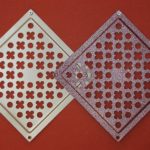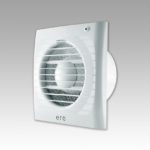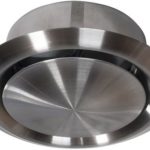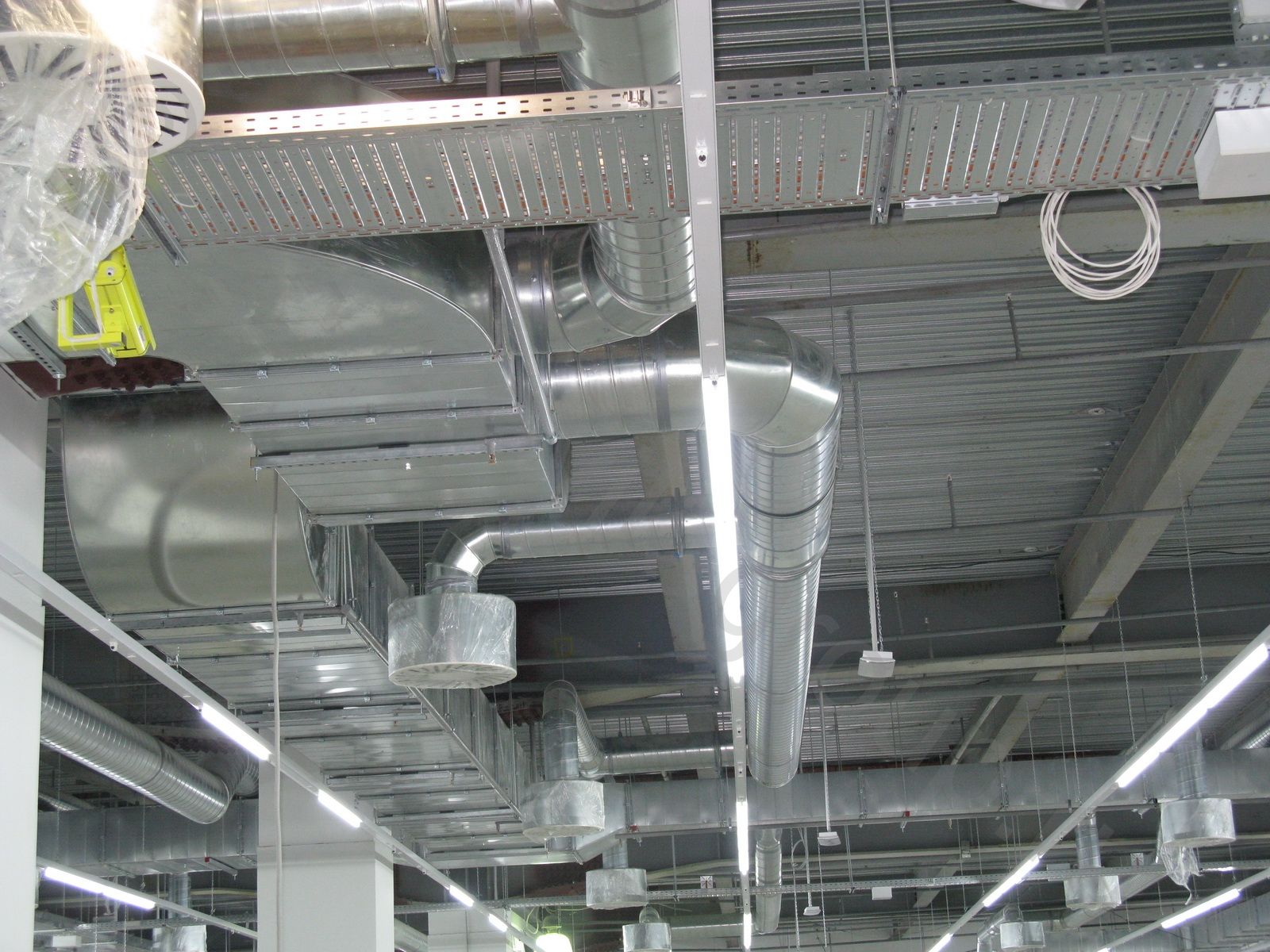Anemostat
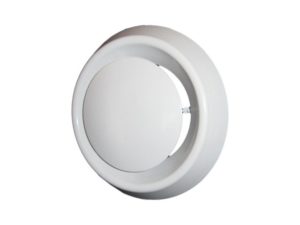 In residential, public, office and industrial premises, various types of ventilation systems are installed to ensure optimal air circulation and create a comfortable microclimate. Some provide a supply of fresh air, others serve to remove excess air.
In residential, public, office and industrial premises, various types of ventilation systems are installed to ensure optimal air circulation and create a comfortable microclimate. Some provide a supply of fresh air, others serve to remove excess air.
There are ventilation systems operating in air heating mode. Here we will consider one of the components of such systems.
The content of the article
What is an anemostat? Term and definition
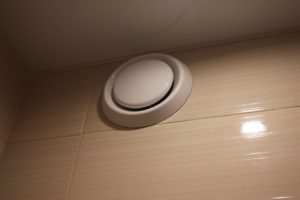 What might be associated with the word “anemostat”? For those who have not encountered this technical device, the first guess will be medical equipment or something related to physics.
What might be associated with the word “anemostat”? For those who have not encountered this technical device, the first guess will be medical equipment or something related to physics.
This is not true, but they will not be far from the truth. This design is one of the types of air distribution ventilation systems to provide air conditioning and controlled distribution of air flows indoors.
Purpose of anemostats. Why are they installed indoors?
Along with ventilation grilles and diffusers, this design is intended to artificially regulate the movement of air masses through ventilation lines.
Grilles and diffusers represent a static structure, designed for a certain volume and one direction of movement of incoming air. The design of the anemostat is dynamic and provides the ability to regulate these indicators manually or automatically.
Types of anemostats
As noted, ventilation systems are designed to perform various functions. The design of the anemostat allows for its use in any system.
Ventilation
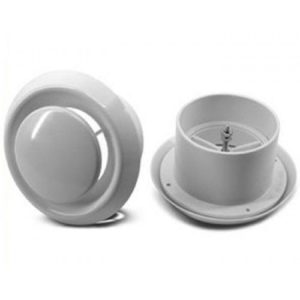 This type provides ventilation of the room and extraction of unpleasant odors from the room, while simultaneously removing excess moisture inside the room with the air flow. Most often used in residential, office and public spaces.
This type provides ventilation of the room and extraction of unpleasant odors from the room, while simultaneously removing excess moisture inside the room with the air flow. Most often used in residential, office and public spaces.
Inlet
Designed to supply fresh air to maintain a comfortable indoor microclimate. Can be used to equip systems in any type of premises (residential, office, industrial). They can be used in air heating systems, both as a separate final part of the system, and as an element of options for prefabricated, ready-made structures, including filters, fans, heaters.
Supply and exhaust
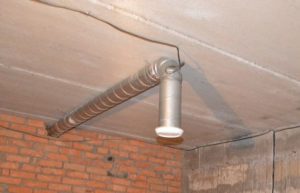 According to its design, this type provides a combined combination of room ventilation functions (exhaust, supply). Depending on the mode of use, this design can provide air supply or exhaust. Like the supply type, this design can be used in autonomous ventilation systems, and as a design detail of forced systems.
According to its design, this type provides a combined combination of room ventilation functions (exhaust, supply). Depending on the mode of use, this design can provide air supply or exhaust. Like the supply type, this design can be used in autonomous ventilation systems, and as a design detail of forced systems.
Types of anemostats by shape
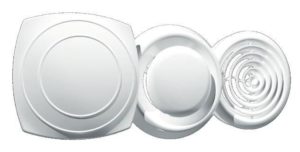 The design of the anemostat is a housing, inside of which an adjusting screw with a “plate” fixed to it is attached to fixed or “floating” lamellas. Depending on the intended mode of application, the “plate” can be convex or concave.
The design of the anemostat is a housing, inside of which an adjusting screw with a “plate” fixed to it is attached to fixed or “floating” lamellas. Depending on the intended mode of application, the “plate” can be convex or concave.
The convex shape (in relation to the room) ensures efficient passage of air flow in the exhaust equipment. The concave shape contributes to a more even distribution of air flow while providing an influx of fresh or warm air.
Unlike a grille or diffuser, this shape creates a conical, circular pattern of air flow direction. When using structures with “floating” slats, it is possible to direct air movement in the optimal direction (along the walls, ceiling).
The choice of material depends on the type of room and operating conditions. The most common material for making anemostats is plastic. This is due to the physical and chemical properties of the material (light weight, strength, chemical inertness with respect to the environment).
For use in ventilation systems with forced air heating, preference is given to a structure made of metal (galvanized steel, aluminum). For connoisseurs of artistic design, the structure can be made of wood or some other material. But such designs are made exclusively to order.
How is an anemostat installed indoors?
The device can be installed in any part of the room where ventilation communications are connected or in accordance with the approved project. But in practice, installation is usually carried out on the ceiling (suspended, stretch ceilings).
In the case of open rigid duct systems, the ventilation holes of which are usually located at the top of the wall, installation is carried out on the wall, which does not affect the efficiency of air flow distribution inside the room.
Methods for installing anemostats
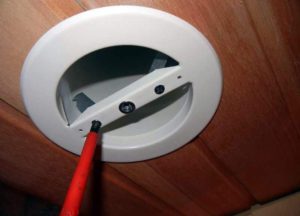 The design of the device ensures ease of installation. The simplest thing is installation on an open, rigid air duct. Equipment suitable for the diameter of the ventilation hole is selected, inserted and mounted on the supporting structure.
The design of the device ensures ease of installation. The simplest thing is installation on an open, rigid air duct. Equipment suitable for the diameter of the ventilation hole is selected, inserted and mounted on the supporting structure.
You can install the product body directly or the housing is mounted on a mounting flange attached to the ventilation hole, included in the delivery package of some product samples.
A more complex installation process involves installing one or more devices on ventilation communications. In the case of installation during construction and finishing work, it must be taken into account that an increase in the number of ventilation holes due to an increase in the length of the laid air ducts practically eliminates the use of anemostats.
In the case of installation in a ready-made, equipped room on mounted ventilation air ducts, the main problem lies in the accuracy of determining the location of the technological hole for installing the product.
Installation instructions
At the exit points of flexible air duct systems, a technological hole is drilled (sawed) with a diameter corresponding to the diameter of the ventilation duct. The anemostat housing is inserted into the air duct hole. The extended part of the device in the form of a circle (cuff) is attached to the load-bearing surface with self-tapping screws or construction tape, depending on the coating material. A support structure with a decorative circle is installed in the body.For reliable fixation, grooves and spacer fasteners are provided. The plate (shield) with the adjusting bolt is screwed into the supporting structure. All that remains is to adjust the required gap for efficient use of the mounted equipment.
Useful tips
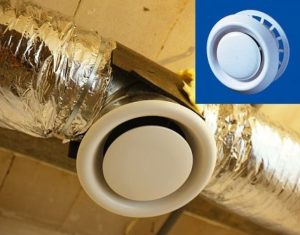 It should be remembered that it is better to install automatic control systems at the stage of construction and installation work. Otherwise, you will have to carry out the repair again after laying the electrical cable and installing the switch.
It should be remembered that it is better to install automatic control systems at the stage of construction and installation work. Otherwise, you will have to carry out the repair again after laying the electrical cable and installing the switch.
When installing during construction, when the housing is installed during the laying of air ducts, and the rest of the structure is installed after finishing work is completed, the air duct opening must be closed.
Popular makes and models
Today, manufacturers supply high-quality products. The brands “ERA” and “VENTS” produce all types of products. You should focus on the technical characteristics of the device depending on the conditions of installation and further operation. The marking gives an idea of the purpose of the structure, the grade of material from which it is made and the maximum diameter of the structure.
Conclusion
The use of anemostats, subject to compliance with all installation and operating instructions, allows you to create a comfortable microclimate in the room, which will have a positive effect on the well-being of those present. In addition to this, it is also an opportunity to make original, decorative changes to the interior of the room.

